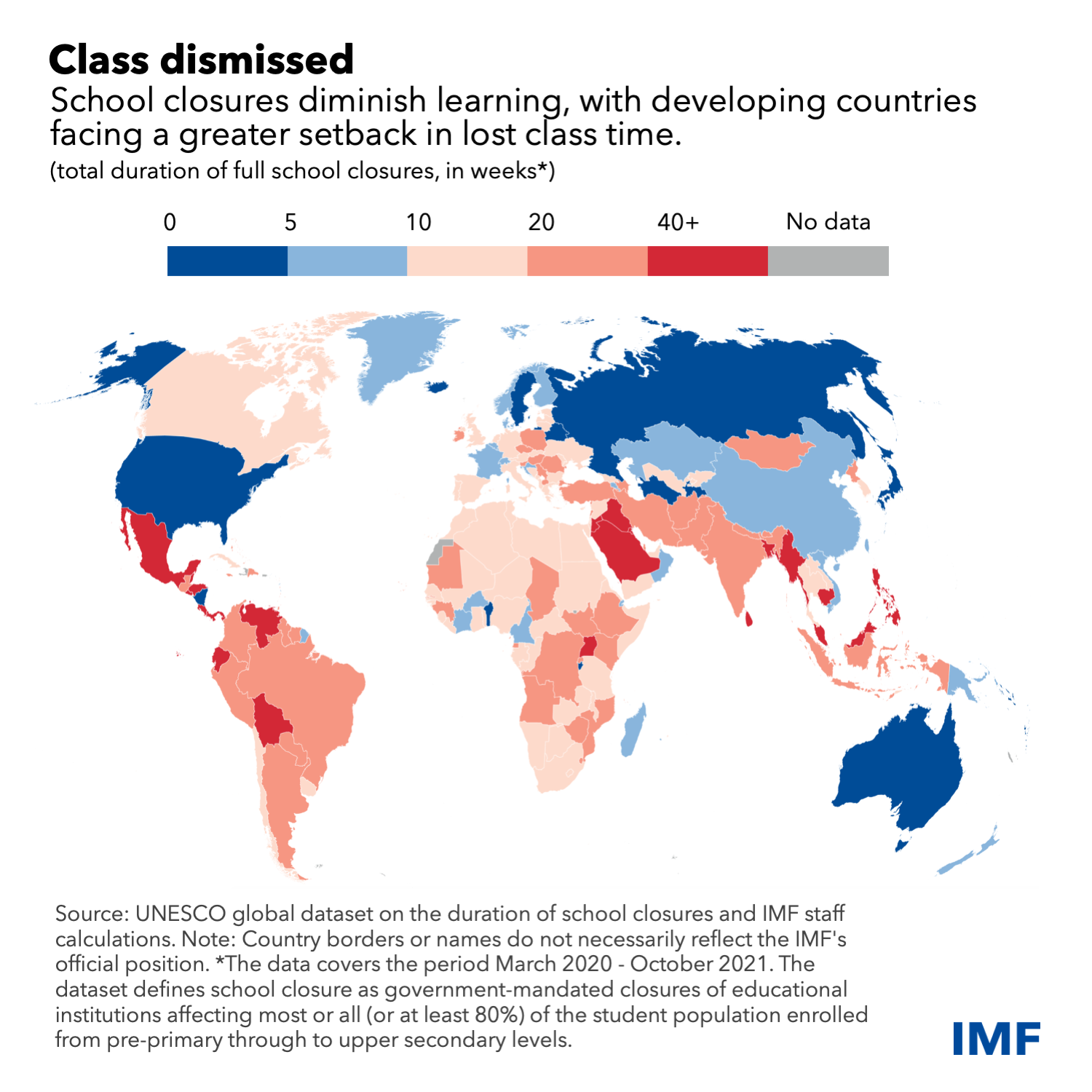Students confront their own nightmare of the enduring pandemic, and the effects may last for years. While the coronavirus has taken relatively more lives from older generations, younger people may feel the impact on their livelihoods for the duration of their working years. From this perspective, the economy too may have a kind of long COVID, with each generation bearing different scars.
The Chart of the Week shows the duration of disrupted classroom time for those from ages 5 to 19, who make up about a quarter of the world’s population. Today, more than two years into the crisis, schools remain closed for millions worldwide—with many more shuttered again by the highly transmissible Omicron variant.
Moreover, our analysis shows learning losses have been highly unequal. Closures in the first two years of the pandemic lasted roughly twice as long in developing countries compared with advanced economies. And the adverse impact of this shock is magnified because the share of those at school age in developing countries is nearly double that of advanced economies.
The IMF’s April Fiscal Monitor estimates that education losses from classroom closures by the end of 2020 amounted to as much as a quarter of the school year in advanced economies and up to half in emerging and developing economies. The chart shows that these unequal learning losses across countries persisted through October.
Such strains also underscore the challenge for graduates joining weak labor markets. Those entering the workforce amid economic downturns experience weaker employment and wage prospects, as was the case with the Great Recession of 2007-09. Analysis in the IMF’s October World Economic Outlook found that the labor market outlook for low-skilled workers and youth remains relatively bleak compared with other groups. This points to increasing inequality and higher vulnerability to poverty.
Together, these effects may have economic consequences for decades through learning losses, lower productivity, and employment disruptions. Pandemic-era students could sacrifice as much as $17 trillion in lifetime earnings, according to a recent report by the United Nations and the World Bank.
That’s why it’s crucial to end this crisis. As the IMF pandemic proposal has emphasized: The economic crunch won’t end until the health crisis is controlled everywhere. And, as the Fiscal Monitor highlighted, policymakers should keep their focus on severely strained social safety nets and health care and education services.






